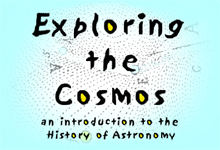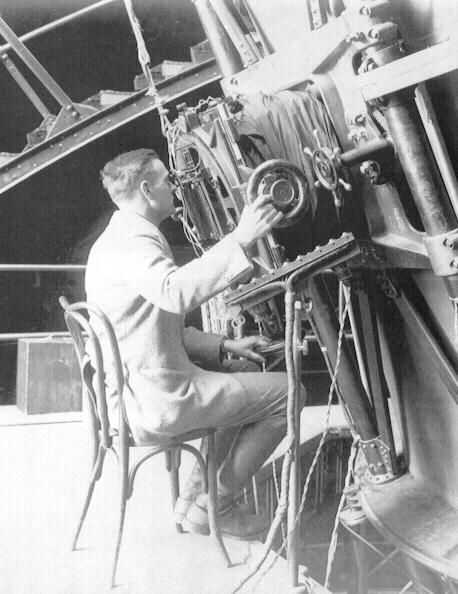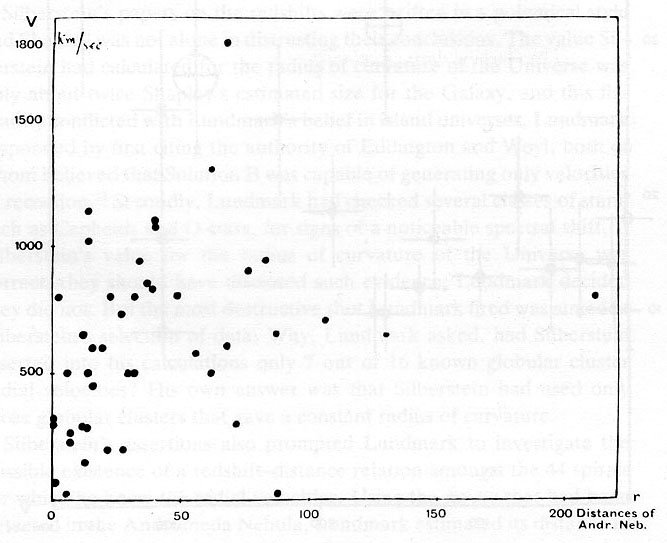

Department of History
University of California, Irvine
Instructor: Dr. Barbara J. Becker
![]()
Lecture 18. The Expanding Universe.
![]()
| Edwin Hubble and the Galactic Redshift/Distance Relationship | |
1909 |
Vesto Slipher (1875-1969), a member of Percival Lowell's observing team at the Lowell Observatory in Flagstaff, began studying the spectrum of the Andromeda nebula (M31). |
| 1913 | Slipher found that M31's spectrum exhibits a significant shift in its position toward the blue. According to Doppler's principle, this shift indicates that M31 is moving toward us at the high rate of speed of 300 km/sec. |
| 1914 | Slipher reported the radial velocities of 14 additional spirals, some of which, like M31, were moving towards us, others moving away. The randomness of their motion encouraged even skeptical astronomers to accept the findings. |
| 1916-7 | Dutch astronomer, Willem de Sitter (1872-1935) developed a model of the cosmos based on Albert Einstein's new theory of general relativity. Based on this model, de Sitter predicted that the spectra of distant star systems should exhibit redshifts. |
| 1917 | After measuring the radial velocities of more nebulae, Slipher finds that nebula with high redshifts appear smaller. Are high redshift nebula really farther away? Is there a physical relationship between a galaxy's radial velocity and its distance?
|

| 1923 | Hubble identified a cepheid variable in the Andromeda nebula which led him to conclude that it is not a nearby forming solar system after all, but rather a large star system like our own Milky Way, located 1 million ly away. |
| 1924 | Swedish astronomer, Knut Lundmark (1889-1958) plotted the radial velocity of 44 galaxies against their estimated distances. He assumed that M31 is 200,000 pc (650,000 ly) away, then made rough determinations of the distances to other galaxies by comparing their sizes and brightnesses to that of M31. Lundmark concluded that there may be a relationship between galactic redshift and distance, but "not a very definite one." |

Galactic redshift vs. distance, plotted by Knut Lundmark (1924) |
|
| 1929 | Hubble published his evidence that galactic redshifts increase with distance based on data he had gathered with some certainty on 24 galaxies. He assumed that M31 was about a million ly (300,000 pc) away. [Note: Because of differences in scale represented, Hubble's diagram (seen below) would occupy only a small fraction of Lundmark's (shown above).] |

Galactic redshift vs. distance, plotted by Edwin Hubble (1929)
Galactic redshift vs. distance, plotted by Hubble and Humason (1931); red rectangle in lower left corner encloses data points plotted in 1929 graph above. |
|
Why was Hubble's redshift-distance relationship so readily accepted
by members of the astronomical community? |
|
|
|
What is the real physical cause of galactic redshifts? |
|
Real physical motion?
|
|
|
|
Expanding universe?
|
|
|
|
Gravitational effect?
|
|
|
|
Change in "universal constants" over time?
Some unknown process???
|
|
|